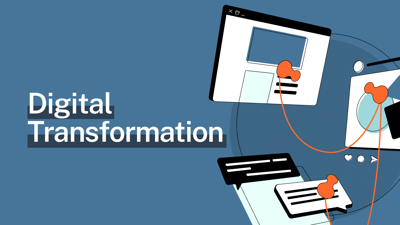How to Determine if HubSpot is the Right Nonprofit CRM for Your Growth

Although many nonprofits use HubSpot as their customer relationship management system (CRM), is it the right one for you?
We’ve helped hundreds of nonprofits like Partners in Health, Surfrider Foundation, and Greater Good Charities identify and implement the right technology to grow.
If you and your team are struggling to reach and engage donors because of outdated, hard-to-use technology, this article is for you.
I’ll share how you can determine if HubSpot is the right nonprofit CRM for your organization using our proven method to evaluate technology.
Step One: Gather and Document Your Nonprofit CRM Requirements
The first step in any successful nonprofit digital transformation is to document your must-haves, nice-to-haves, and current pain points.
To do this, grab your notebook and make a list of stakeholders. These are folks like gift officers, marketers, technology specialists, key executives, and the like who will be using your nonprofit CRM to engage constituents.
One of each is all you need.
Interview them to identify their ways of working, which will help you determine and document their requirements.
If you need help with this process or are simply too busy to manage it on your own, book a free Scale Session with one of our nonprofit growth consultants today.
We can provide you with some resources to help, like a list of questions you should ask your stakeholders. Or chat with us about how we can do it for you.
Step Two: Request a Customized Demo of HubSpot for Nonprofits
It’s now time to run your requirements through a demo of HubSpot.
Let’s say that your nonprofit has three programmatic pillars, and you want to be able to customize constituent journeys based on their interests.
You would ask us to demonstrate how a donor who, say, gave to a campaign to test waterways for pollutants would be sent a different welcome series than a new volunteer for shoreline cleanup or someone interested in beach access.
A CauseMic growth consultant would go into The Giving Sprocket, the HubSpot demo portal that HubSpot hired us to build specifically for nonprofit demos. We'd show you how you can leverage subscription types to customize donor journeys based on form completion with limited technical know-how.
Just like that, you’ve matched a HubSpot demo to your nonprofit’s real-life requirements.
Step Three: Learning the Cost of Implementing HubSpot for Nonprofits
A digital transformation is an investment, so it’s only fitting you know how much you’ll be spending on HubSpot.
There are a few different costs to keep in mind. First up, platform cost. This is how much HubSpot will charge you for the use of their technology.
The good news is that HubSpot provides qualifying nonprofits with a 40% discount.
HubSpot has five different hubs that you can add depending on your requirements. The ones we most often implement for our nonprofit clients are the marketing hub and content management system (CMS) hub.
The marketing hub is used for things like sending donor emails and tracking performance, while your nonprofit’s website can be built on HubSpot using the CMS hub.
Each Hub has three different levels: Starter, Professional, and Enterprise. Which is right for you depends on your requirements.
CauseMic’s experienced growth consultants will help you determine which hubs you need and at what level.
Next up, you’ll want to consider how much your HubSpot implementation will cost with the support of a HubSpot implementation partner.
“I’ve partnered with CauseMic to help my nonprofit clients achieve their missions through the simplification and improvement of their tech stacks. They have deep nonprofit industry experience. They ask smart questions and value getting to know the business and requirements prior to solutioning. It’s a pleasure to work with CauseMic and a ton of fun to see them help nonprofits grow!”

Exactly how much will depend on which technology you are migrating from, which hubs you are implementing, and how much support you want in setting up templates and automation.
Getting clarity on which hubs are right for your nonprofit’s use is important to do in the early stages of your digital transformation. It will help you budget for what you need, and maybe you can even pursue a capacity grant to fund the work.
Finally and often overlooked is the recurring cost to maintain your tech stack. Requiring fewer integrations, recurring costs are oftentimes lower for nonprofits on HubSpot than other engagement CRMs, but there is still a need to include internal or external support to maintain the health of your database. This will depend heavily on your team’s capability and capacity.
After all, you’re trying to grow your revenue and impact, so it’s critical that your tech stack get a regular tune-up. Much like how you routinely change the oil in your car or hit the gym to avoid the hospital.
Step Four: Evaluate HubSpot Against Other Nonprofit CRMs
HubSpot may be the best choice for your nonprofit, but you’ll need to vet that using your requirements and budget. You’ll also want to schedule demos with one or two other nonprofit CRMs for comparison.
Once you’ve evaluated your options, it’s time to select the right platform for your organization. From costs to ongoing maintenance to ease of use, there are lots of things to consider.
The good news is that you don’t have to risk making the wrong decision.
You can book a free strategy call with CauseMic’s experienced nonprofit growth consultants. We’re eager to help you choose the right nonprofit CRM for you and ensure a successful digital transformation.



